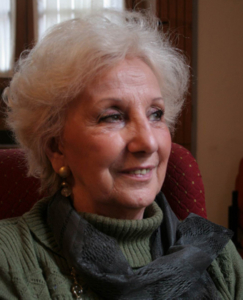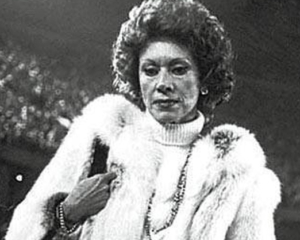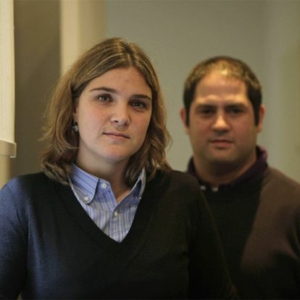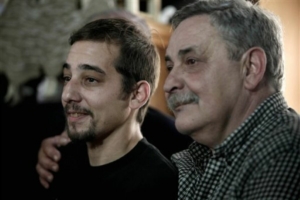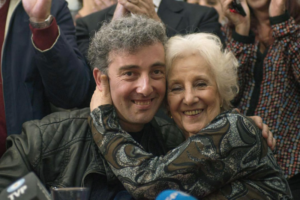 The 2017 International Symposium on Human Identification (ISHI27) was amazing. Top DNA researchers from the international community attended, along with forensic specialists and law enforcement personnel interested in advancements in DNA technology. The topics ranged from DNA phenotyping with ever-more-accurate predictions of hair color, eye color, and ethnicity, to the sexual assault kit backlog, to Rapid DNA analysis for mass disasters and missing persons cases. The Wednesday afternoon session on Interesting Cases was my favorite, featuring the identification of the remains found at the Dozier School for Boys and how the Grim Sleeper serial killer was identified through familial searching.
The 2017 International Symposium on Human Identification (ISHI27) was amazing. Top DNA researchers from the international community attended, along with forensic specialists and law enforcement personnel interested in advancements in DNA technology. The topics ranged from DNA phenotyping with ever-more-accurate predictions of hair color, eye color, and ethnicity, to the sexual assault kit backlog, to Rapid DNA analysis for mass disasters and missing persons cases. The Wednesday afternoon session on Interesting Cases was my favorite, featuring the identification of the remains found at the Dozier School for Boys and how the Grim Sleeper serial killer was identified through familial searching.
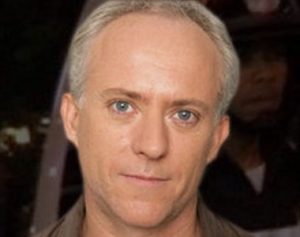 The keynote was given at the Tuesday opening session by internationally recognized video journalist David O’Shea. O’Shea is known for his tough journalism. He has traveled the world to interview warlords, smugglers, military leaders and politicians on both sides of international conflicts.
The keynote was given at the Tuesday opening session by internationally recognized video journalist David O’Shea. O’Shea is known for his tough journalism. He has traveled the world to interview warlords, smugglers, military leaders and politicians on both sides of international conflicts.
O’Shea addressed the conference about his documentary on the Grandmothers of the Plaza de Mayo (Asociación Civil Abuelas de Plaza de Mayo), a human rights organization formed in Argentina in 1977 in response to the disappearance of hundreds of children who were either kidnapped or born to mothers who were “disappeared” political dissidents during the country’s “Dirty War” in 1974-1983. It was discovered that after giving birth, the captive mothers were executed, and their children were sold or given to families supporting the military government regime – sometimes the killers themselves. By stealing the children of the disappeared, the junta believed that it would not only eliminate its political opponents, it would also eliminate their children. They would not grow up with the political views of their biological parents.
As O’Shea explained, pregnant captives were fed better, and then kept alive for some time after the birth of their children so they could nurse them. The mothers were then executed and the babies were take home by their killers or to childless couples who were politically aligned with the regime. It is estimated that about 500 babies were either kidnapped or born in captivity.
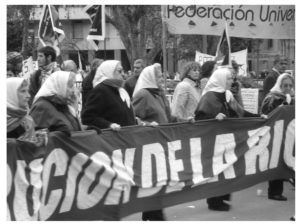 The Grandmothers started their marches in the Plaza de Mayo in 1977, at the height of the kidnapping and executions of left-wing activists. They were fearless in their demands that Argentine dictator Jorge Rafael Videla account for their grandchildren. Their efforts led to the creation of the Argentine Forensic Anthropology Team and the National DNA Databank. In 1984, the first child was identified by genetic testing with the assistance of Dr. Marie-Claire King, a geneticist at the University of California at Berkeley. The President of the Grandmothers of the Plaza, Estela Barnes de Carlotto, 85, was nominated for the 2007 Nobel Peace Prize.
The Grandmothers started their marches in the Plaza de Mayo in 1977, at the height of the kidnapping and executions of left-wing activists. They were fearless in their demands that Argentine dictator Jorge Rafael Videla account for their grandchildren. Their efforts led to the creation of the Argentine Forensic Anthropology Team and the National DNA Databank. In 1984, the first child was identified by genetic testing with the assistance of Dr. Marie-Claire King, a geneticist at the University of California at Berkeley. The President of the Grandmothers of the Plaza, Estela Barnes de Carlotto, 85, was nominated for the 2007 Nobel Peace Prize.
In November 1977, Estela was a school principal in Buenos Aires when her daughter Laura was abducted by a military death squad. In April 1978 she learned from one of Laura’s fellow prisoners that Laura was still alive and that she was pregnant with a baby that would be born in June. In August, Estela was called to the police station to retrieve Laura’s corpse. She was told she was “privileged” to have the opportunity. Laura had been shot in the stomach and her face had been smashed with a rifle butt.
Realizing that there were many other grandmothers like herself who were searching for their lost grandchildren, she helped found the Association of the Grandmothers of the Plaza de Mayo, named after the city square facing the presidential palace in downtown Buenos Aires. Since the Grandmother’s first recovery in 1984, as of 2017, 119 stolen children had been identified. In 1989, Estela became their president.
Quien soy yo? is a video on YouTube that documents a visit Estela made to an elementary school in 1985, shortly after Argentina’s return to democracy. In the film, she explains to a class how the children came to be stolen, and how the Grandmothers were working to reunite them with their families. She explains that Tatiana and Mara, the first two children who were identified, were allowed to stay with their adoptive families. The children were secure and happy living with the only families they had ever known, and their biological parents were dead.
Along the way, there were stories that brought up policy issues. Should parents of stolen children be sent to prison? They were the only parents the stolen children had ever known. Many were good parents, with no knowledge they had adopted a stolen child. Some parents did not want their children to give DNA to the Databank, and put pressure on them not to contact the Grandmothers. Some children ran away from the Grandmothers to Uruguay or Paraguay.
One of the case histories O’Shea presented was that of “Juan” who was born in a detention center. His mother was killed, and he was taken home by a military police officer. He was the 77th child recovered.
Juan was 26 years old when he discovered his true identity. He had had a lot of self doubts about himself, but he brushed them aside. He felt so different from the family he had grown up with. It was logical to him to find out that he was not their son. He keeps in touch with his sister, but he does not see his father. He cannot forgive his mother for not speaking out.
“Gustavo” grew up with his mother and her sister. His mother showered him with love, but he was wracked with self doubts. Ever since he was 12 years old, he had asked about his father, but his mother was evasive and refused to answer his questions. She said his father had been killed in an accident. He asked what kind of accident. Her answer was vague. He asked where the accident happened. She wouldn’t tell him.
He started looking for his father assuming his mother was his mother, and that he was the product of a one night stand. His mother died when he was 14 years old, taking the secret to her grave. After that, Gustavo had a mental breakdown and hit rock bottom.
When Gustavo finally took the DNA test, he was amazed to discover his mother was an impostor. His name was really Marco and not Gustavo. Finding his birth parents and his true identity was the incentive he needed to turn his life around. Marco was calm and at peace, but his alter ego Gustavo had been on drugs.
Marco had not gone to take the DNA earlier out of his innocent love and loyalty to the “mother” who had shaped his character. He could not believe his birth grandmother had been looking for him. He was deeply moved that she had never given up her search. He could not imagine the fear his adoptive mother experienced in keeping her secret – his picture was on the banner the Grandmother carried on their marches every week around the Plaza de Mayo.
As of 2017, there were 18,000 samples in the National Genetic Databank at the Carlos Durand Hospital in Buenos Aires. On the average, five to eight people a day donated samples to the databank or gave samples in the provinces. There was also a separate databank created that contains DNA from mass graves with the hope of identifying the lost parents.
O’Shea commented that anyone can walk into an embassy anywhere in the world and give a sample, because some of the perpetrators fled overseas. The previous month, there was a case in Paraguay where DNA from bone samples was matched to surviving family members of a stolen child in Argentina. O’Shea himself came across a woman from Argentina who was living in Wellington, New Zealand. He encouraged her to donate a sample because she suspected she could be a stolen child.
The most controversial case has been that of Ernestina de Noble Herrera, a prominent Argentinian publisher and executive. She was also the largest shareholder of the Grupo Clarín media conglomerate and director of the flagship publication Clarín, the Spanish language newspaper with the highest circulation in the world. In 1976, Noble adopted two infants, Felipe and Marcella. Suspecting they might be stolen children, the Grandmothers spent two years trying to obtain their adoption records. The adoptions were unofficial and done through the church. Ernestina claimed that she had found the children on her doorstep, but because the family lawyers fought so hard to prevent DNA testing, the Grandmothers became suspicious that the two children had been stolen.
In 2001, Felipe and Marcela agreed to be DNA tested and their results were compared to the two families who were suing them over the matter. However, the tests indicated there was no relationship.
In 2009 Ernestina agreed that the children could be tested through the Forensic Medical Court, but the Grandmothers believed the court to be corrupt. They insisted the children be tested by the National Databank since it had the only regulated laboratory available.Instead, Felipe and Marcella’s homes were raided, and DNA samples obtained from the children’s clothing and other personal items were submitted to the National Databank. Unfortunately, the samples were contaminated, so that the results were inconclusive. DNA of two men and a woman was obtained from Felipe’s shirt; his socks yielded no DNA at all. Marcella’s socks produced a mixture of DNA from three individuals.
In April 2010, Marcella Noble told the Associated Press:
Our identity is ours. It’s a private thing and I don’t think it’s up to the state or the Grandmothers to come and tell us what is ours.
Her statement did not go down well with the public. Shortly after this, the government passed a law authorizing DNA testing for cases relating to crimes against humanity, including kidnapping children.
A court ruling in 2011 forced the collection of saliva, to which the Noble children surprisingly agreed. Yet a comparison of Felipe and Marcella’s DNA was not permitted against the entire databank; a comparison was permitted with only about 50 families who were thought to be related. Although a relationship with the majority of the families was ruled out, there were a few results that were inconclusive. While the Noble family was satisfied that this indicated Felipe and Marcela were not stolen children, the Grandmothers insisted that a DNA match might be found in the future to families who had not yet come forward to donate samples to the databank.
The case created a debate about the ethics of forced testing. For the Grandmothers, it was never a moral dilemma. It was a crime to steal babies – so many people were affected. Estela had decided that Ernestina was guilty, and most people agreed. However, Estela realized that DNA testing was an invasive process because scenes at the Noble house had made her feel uncomfortable.
In the future, she realized that individual compulsory testing must be done with more sensitivity. Marco believed that if Felipe and Marcella were children of the disappeared, having them tested would bring peace for everyone. Marco’s kids knew him as Gustavo; they had to adjust to living with Marco, a new guy. He was the same person, but a new person at the same time.
Reunion #101 was that of Francisco, a street performer who proved to be the son of Estela’s secretary Abel, whose pregnant wife had disappeared 30 years earlier. Francisco had been adopted by an intelligence officer who worked at Campo de Mayo hospital where he was born in 1977. Abel and Francisco were reunited at the Grandmother’s office. Because of his adoptive father’s cruelty, Francisco had left home when he was 16 years old and since then had lived on the street. His father had been was one of the kidnappers and torturers. Francisco testified against him in court.
In 2014, Francisco’s story was eclipsed by that of Ignacio Hurban, Child #114, who proved to be Estela’s missing grandson. After 36 years, at the age of 85 years old, she was finally reunited with him. Ignacio had just discovered that he had been adopted, and shortly thereafter, found himself sitting next to his grandmother, the most respected woman in Argentina and one of the most famous women in the world. Shortly after his reunion with Estela, he changed his name to Ignacio Guido Montoya Carlotto. Guido was the name his mother had given him at birth, after his grandfather, Estela’s husband.
As of 2017, there were about 380 more children to be found. When President Obama visited Buenos Aires in March 2016 for the 40th anniversary anniversary of the coup that began the military crackdown of labor unions and leftist opponents, he remarked:
We cannot forget the past. But when we find the courage to confront it, when we find the courage to change that past, that’s when we build a better future.

